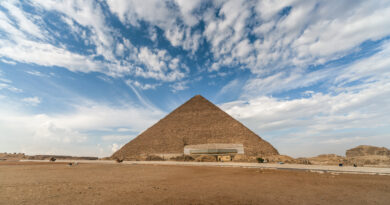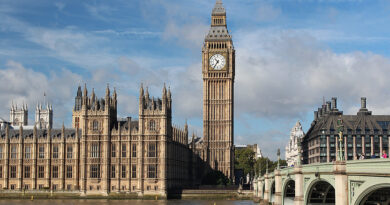Royal Palace of Brussels, Brussels, Belgium
Exploring the Majestic Beauty: Royal Palace of Brussels, Belgium
When it comes to architectural grandeur, historical significance, and regal splendor, the Royal Palace of Brussels stands as a testament to the rich history and culture of Belgium. This iconic landmark, nestled in the heart of Brussels, not only serves as the official residence of the Belgian monarch but also holds a mirror to the nation’s captivating past and its enduring commitment to traditions. Let’s embark on a virtual journey to uncover the captivating story of the Royal Palace of Brussels.
A Glimpse into History
The history of the Royal Palace dates back to the late 18th century when it was commissioned by Emperor Napoleon Bonaparte. Originally intended to be a town hall, the building underwent significant transformations over the years. Its architecture is a blend of neoclassical and Louis XVI styles, showcasing intricate detailing, imposing columns, and elegant symmetry.
One of the most intriguing aspects of the Royal Palace is its resilience through challenging times. Despite being severely damaged by fires and facing the ravages of various conflicts, the palace has always been meticulously restored to its former glory, preserving its historical significance.
Architectural Marvels
As you approach the Royal Palace, its majestic facade and imposing gateways capture your attention immediately. The central balcony, adorned with Belgian flags, is where the Belgian monarch addresses the nation on significant occasions. The facade itself boasts an array of sculptures and carvings that depict various historical and allegorical figures, offering a visual narrative of Belgium’s heritage.
The interiors of the palace are equally enchanting. Lavish halls, adorned with opulent chandeliers, ornate ceilings, and intricate tapestries, provide a glimpse into the extravagant lifestyle of the Belgian royalty. One of the highlights is the Mirror Room, which exudes elegance and grandeur, reflecting the artistic finesse of its creators.
Summer in the City: Opening to the Public
While the Royal Palace serves as the official residence of the Belgian King, it opens its doors to the public during the summer months, from July to September. This tradition of allowing citizens and visitors to explore the palace has been in place since the 19th century and offers a unique opportunity to witness the splendor of the royal residence up close.
Visitors are treated to a curated tour that showcases various rooms, each with its own distinct theme and historical significance. The Great Hall, for instance, is a majestic space where state banquets and receptions are held. The Room of Alexander features exquisite marble and serves as the backdrop for important diplomatic meetings. The Throne Room, with its golden decor and intricate detailing, offers a glimpse into the ceremonies associated with the Belgian monarchy.
The Belgian Monarchy: Symbolism and Unity
Beyond its architectural marvels, the Royal Palace holds deep symbolic value for Belgium and its monarchy. In a country known for its linguistic and cultural diversity, the monarchy serves as a unifying force that transcends regional differences. The presence of the Royal Palace in Brussels, the capital city, serves as a reminder of the nation’s unity and shared identity.
The Belgian King’s role is largely ceremonial, but it holds immense significance in terms of national cohesion. The monarchy represents continuity and stability in a rapidly changing world, providing a sense of familiarity and tradition that resonates with the Belgian people.
Embracing Modernity and Tradition
While the Royal Palace is a symbol of tradition and heritage, it also embraces modernity in various ways. The palace grounds host cultural events, exhibitions, and even concerts, inviting citizens to engage with the space in contemporary contexts. This juxtaposition of history and modernity reflects the essence of Brussels as a city that values its past while embracing innovation.
The Royal Greenhouses of Laeken, an integral part of the Royal Palace complex, are another example of this harmonious blend. These greenhouses, dating back to the 19th century, showcase an impressive collection of rare and exotic plants. The annual opening of the greenhouses to the public is an event eagerly awaited by both locals and tourists, offering a unique opportunity to experience the lush beauty that resides within the palace grounds.
Preserving Legacy: A Monument Frozen in Time
The Royal Palace of Brussels stands as a silent witness to the evolving history of Belgium. Its corridors have seen monarchs, dignitaries, and citizens pass through, each leaving their mark on its narrative. The preservation of this legacy requires a delicate balance between restoration and conservation.
Efforts to maintain the palace’s architectural integrity are ongoing, and meticulous attention is given to every detail, ensuring that future generations can continue to appreciate its magnificence. The Royal Trust of Cultural Heritage plays a crucial role in safeguarding this heritage, allowing the palace to remain a symbol of Belgium’s rich past.
Conclusion
The Royal Palace of Brussels is more than just a grand architectural marvel; it’s a living testament to Belgium’s historical journey, cultural diversity, and unwavering commitment to tradition. As it opens its doors to the public every summer, it invites us to step into its opulent halls and immerse ourselves in the grandeur of a bygone era. From its neoclassical facade to its ornate interiors, the palace captures the essence of a nation that values its past while embracing the present. The Royal Palace of Brussels is more than a residence; it’s a mirror reflecting the soul of Belgium.



